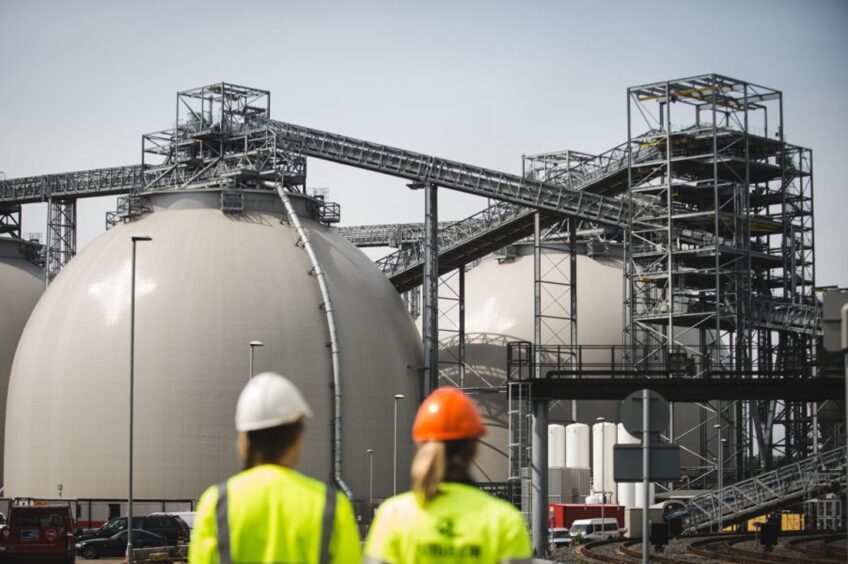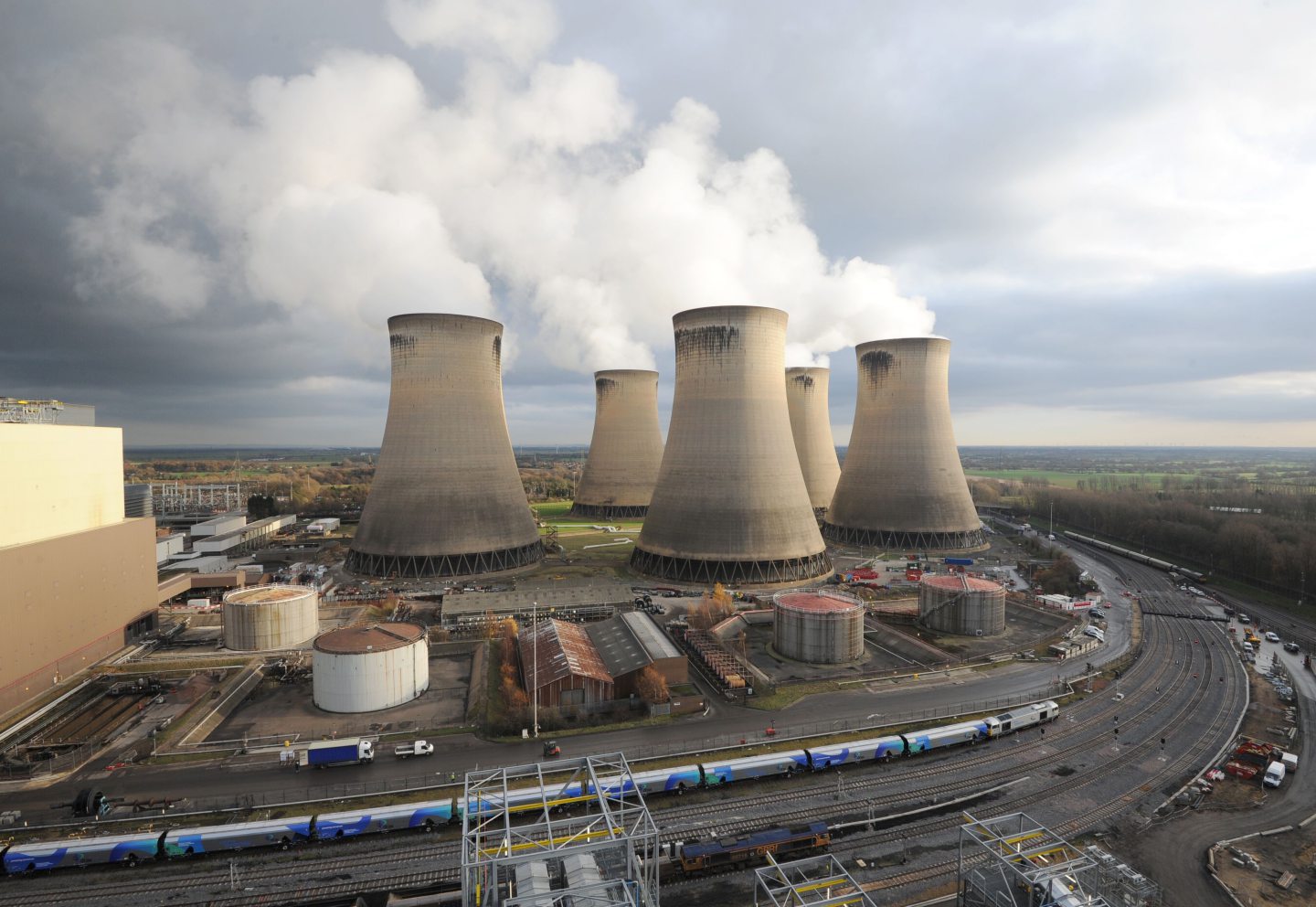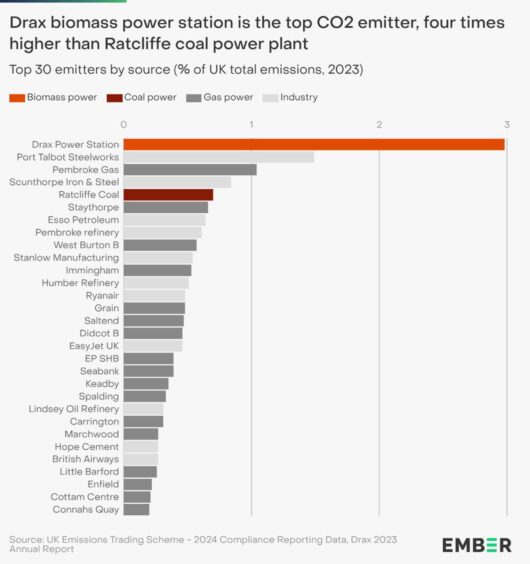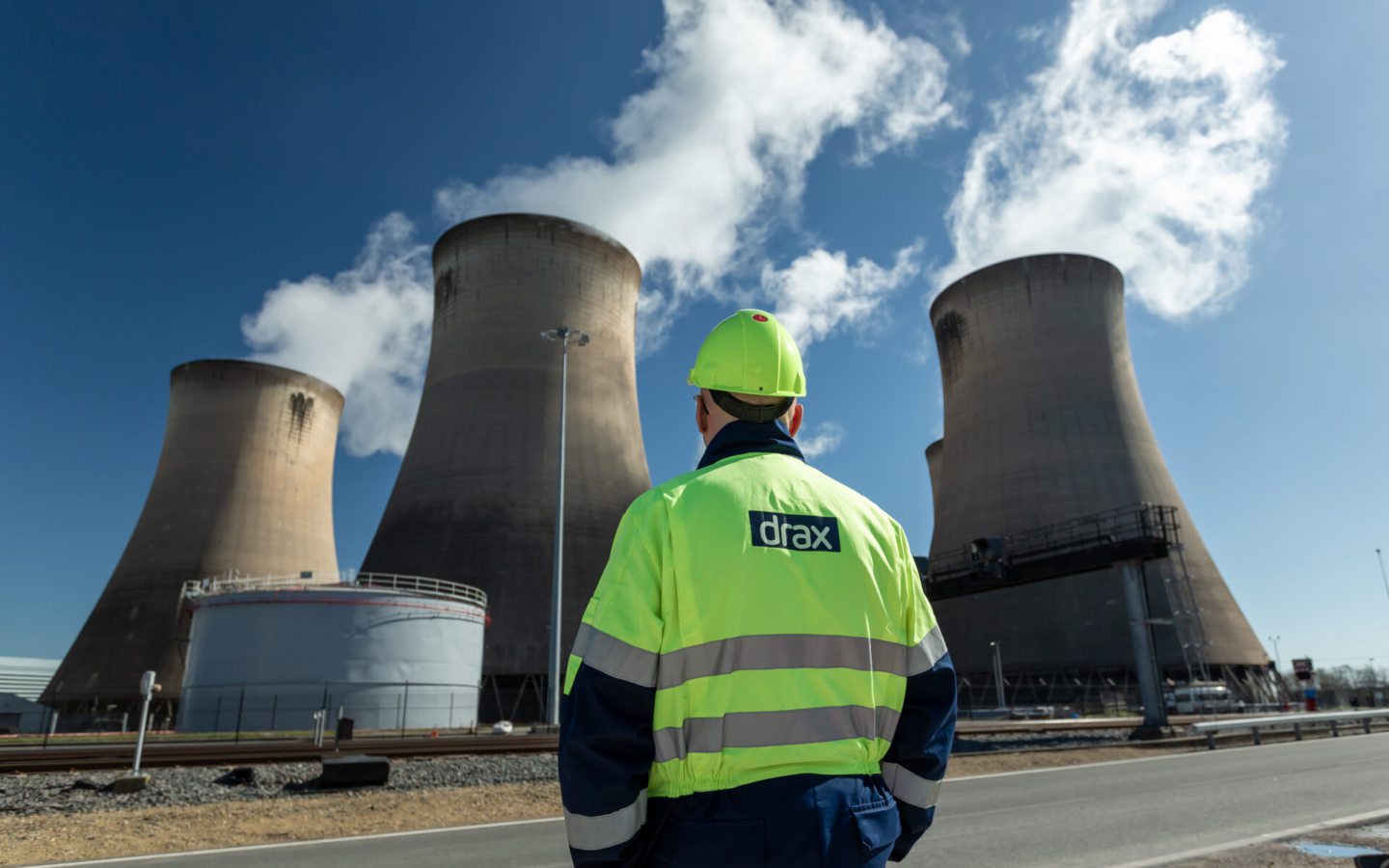
The Drax power station in Yorkshire receives £550 million per year in green subsidies despite being the largest single carbon emitter in the UK, a report has found.
The report from think tank Ember said the Drax biomass power station emitted 11.5 million tonnes (Mt) of CO2 in 2023, accounting for nearly 3% of total UK emissions.
Despite these emissions, Ember said Drax received £550 million in public subsidies last year, bringing the total amount received since 2002 to around £6.5 billion.
These subsidies are due to expire by 2027, but Drax has advocated for a “bridging subsidy” until 2030 when it aims to have carbon capture technology installed.
The prospect of continued subsidies attracted criticism from climate campaigners at the start of this year because of the high carbon emissions associated with biomass plants.
Wood has low energy density, meaning that the Drax power station needs to burn high volumes of pellets to generate power.
As a result, biomass power releases more CO2 per unit of electricity than coal or gas power stations.
RWE, which operates some of the largest gas power plants in the UK, emitted 10.2 Mt of carbon last year compared to the 11.5 Mt of emissions from Drax.
Drax Power Station emissions
Ember’s report said emissions from Drax exceeded the next four largest power stations combined and are over four times the emissions of the UK’s last remaining coal power plant at Ratcliffe on Soar (2.7 Mt), which will shut down later this year.
Drax is eligible for public funds under the EU and UK emissions trading schemes, which do not require biomass power plants to report emissions.
This is because the regulations assume future forest growth will offset emissions from power generation.
In addition, the carbon released from combustion was sequestered recently from the atmosphere, compared to fossil fuels where the carbon was sequestered hundreds of millions of years ago.
However, a growing body of scientific research is raising doubts about the environmental credentials of wood biomass power.
In 2021, the European Academies Sciences Advisory Council said using woody biomass for power “is not effective in mitigating climate change and may even increase the risk of dangerous climate change”.
A recent BBC investigation also found wood burned at Drax was sourced from rare forests in Canada.
Biomass energy has also been found to have negative consequences for human health from increased air pollution.
Ember analyst Frankie Mayo said supporting biomass with subsidies is a “costly mistake”.
“Burning wood pellets can be as bad for the environment as coal,” Mayo said.
Drax BECCS plans
Once the most polluting power plant in Western Europe, in 2019 Drax announced plans to become “carbon negative” by 2030.
Central to that goal is transitioning to become a Bioenergy with Carbon capture Capture and Storage (BECCS) plant.
Under the approved plans, captured CO2 from Drax will be transported via pipeline and stored offshore as part of the BP and Equinor-led Northern Endurance Partnership.
Drax said the decision to approve its BECCS project will enable Drax Power Station to “continue to play a critical role in supporting UK energy security”.
Recent analysis commissioned by Drax found implementing the project could “save the UK £15 billion in whole economy costs between 2030 and 2050”.
Drax said it plans to invest billions into the BECCS project, “subject to the right support from the UK government”.
This is despite the company posting a £1.2 billion profit in February and distributing £300 million to shareholders last month.
But earlier this year, National Audit Office head Gareth Davies warned the UK government to carefully consider the environmental impact of “unabated biomass” beyond 2027.
“If biomass is going to play a key role in the transition to net zero, the government needs to be confident that the industry is meeting high sustainability standards,” Davies said.
“However, government has been unable to demonstrate its current assurances are adequate to provide confidence in this regard.
“Government must review the assurance arrangements for these schemes, including ensuring that it has provided adequate resources to give it assurance over the billions of pounds involved.”
UK energy security
In addition to the emissions impact, Ember said the Drax BECCS projects will do little to protect UK energy security, as almost all wood pellets burned at Drax are imported.
The think tank said Drax may also find it more profitable to sell wood pellets on the global market rather than use them for UK power generation when electricity prices are high.
Ember pointed to a period during the European gas crisis in 2022 when the Drax power plant “sat idle for weeks”, costing UK taxpayers an estimated £639 million.
In a separate report earlier this year, Ember called BECCS an “expensive gamble” and a “very risky proposition to the UK energy bill payer”.
“Burning wood for power is an expensive risk that limits UK energy independence and has no place in the journey to net zero,” Mayo said.
“True energy security comes from home-grown wind and solar, a healthy grid, and robust planning for how to make the power system flexible and efficient.”
Report ‘fundamentally misrepresents’ biomass
A spokesperson for the Department for Energy Security and Net Zero said the Ember report “fundamentally misrepresents how biomass emissions are measured”.
“The Intergovernmental Panel for Climate Change is clear that biomass sourced in line with strict sustainability criteria can be used as a low carbon source of energy,” the spokesperson said.
“We will continue to monitor biomass electricity generation to ensure it meets required standards.
“Investing in clean power is the route to end the UK’s energy insecurity and tackling the climate crisis, and we are taking immediate action to implement our plan for clean power by 2030.”
Energy Voice contacted Drax Group for comment.

 © PA
© PA © Supplied by Ember
© Supplied by Ember © Image: Drax Group
© Image: Drax Group